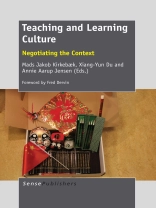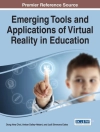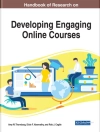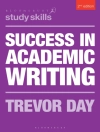This book is based on educational research conducted by researchers from the Department of Learning and Philosophy and the Confucius Institute for Innovation and Learning at Aalborg University. Empirically, it reports on different approaches to teaching and learning of culture, including a student-centered task-based problem-based learning (PBL) approach, a digital technology-supported approach and more. It also reports on how, when teaching and learning culture, teachers’ professional identity and the informal teaching and learning environment impact the teaching and learning of culture in different educational settings from primary school to university. A central theme in the book is the power of context. The studies illustrate in multiple ways, and from different angles, that “culture is not taught in a vacuum or learned in isolation”, but may be influenced by many factors both inside and outside the classroom; at the same time, culture also influences the context of the learning. The context may be “invisible” and hide itself as tacit knowledge or embedded values, or it may be very visible and present itself as a fixed curriculum or an established tradition. No matter what forms and shapes the context takes, the studies in this book strongly indicate that it is essential to be aware of the power of context in teaching and learning culture in order to understand it and negotiate it. This book suggests that teachers should not try to limit or avoid contextual influences, but instead, should explore how the context may be integrated into and used constructively in the teaching and learning of culture. This allowance of context in the classroom will allow for teachers, students, subjects and contexts to enter into a dialogue and negotiation of meaning that will enrich each other and achieve the established goal – acquisition of cultural awareness and intercultural understanding.
Mục lục
Foreword: Learning and Teaching Culture Beyond Fantasies?; 1. The Power of Context in Teaching and Learning Culture; 2. Filling Up A “China-Box”: How Task-Based Problem-Based Learning Can Be Applied to Teaching in Chinese Culture; 3. Learning from Designing and Organizing an Intercultural Student Exchange Program; 4. A PBL-Inspired Method for Facilitating Culture Learning; 5. Danish Students’ Perceptions of Task-Based Teaching in Chinese; 6. Confronting Cultural Challenges When Reconstructing the Teacher-Student Relationship in a Chinese Context; 7. Cultural Infl uences on Chinese Language Teachers’ Perceptions and Beliefs in a Danish Context; 8. Professional Identity Construction of Non-Native Chinese Language Teachers; 9. Playful Learning Culture in the Museum; 10. “Learning, When You are Not Learning”: Artistic, Scientifi c, Professional, and Political Culture at Leading Universities in Britain, France, USA, and China; 11. Context as Threat or Opportunity: The Contribution of Context to Teaching & Learning of Culture; Notes on Contributors; Index.












